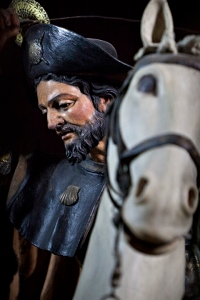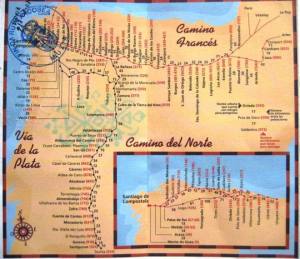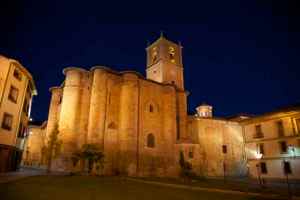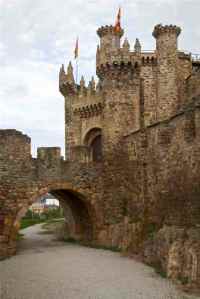
The Way of St. James is the pilgrimage to the Cathedral of Santiago de Compostela in northwestern Spain. It ranks along with Rome and Jerusalem as one of Christendom’s great pilgrim destinations.

By the 12th century, the Camino had become a rather organized affair and what is widely regarded as the world’s first travel guide, the Codex Calixtinus from around 1140, provided the would-be pilgrim with the rudiments of what he or she would need to know while en route; advice for pilgrims, informing them where they should stop, relics and sanctuaries they should visit, bad food they should be wary of and commercial scams, including in the author’s opinion, other churches who claimed to hold relics of St. James. The book provides a valuable insight into the life of the 12th-century pilgrim.

By the 12th and 13th centuries, half a million pilgrims made their way to and across northern Spain and back each year. Local kings and clergy built hospitals, hostels, roads and bridges to accommodate them. The Knights Templar patrolled the Camino, providing protection, places of hospitality, healing and worship, as well as a banking system that became one source of their fabled wealth.
There is evidence of a pre-christian route, the celts used this route across northern Spain, to Finisterre, the end of the world. For them, watching the sun set over the endless waters was a spiritual experience.

Some of it winds its way over the remains of pavement laid down by the Romans two millennia ago, they built infrastructure, including a road from Bordeaux in modern France to Astorga in northwest Spain, to mine the area’s gold and silver. Some of the original road remains on today’s Camino.
A combination of the Protestant Reformation initiated by Martin Luther around 1520, the Enlightenment and European wars gradually suppressed the Camino. In the 17th century Louis XIV of France forbade his subjects from going to Santiago in order to stop trade with Spain. The Camino fell into disfavour but was never abandoned.
The European Union has designated a network of four pilgrimage routes in northern Spain in 1993. The network of routes represent 1500 kilometres, and includes historical sites, cathedrals, churches, monasteries, hostels, bridges and natural landscapes. Pilgrimages were an essential part of European culture and spiritual life during the Middle Ages. Along the route pilgrims were provided with everything they needed to ensure their physical and spiritual well-being. The route contributed to the economic and social development of the towns along the way, and the movement of large numbers of visitors contributed to the two-way exchange of cultural advances between the Iberian Peninsula and the rest of Europe.
Now, after centuries of slumber, the Camino is alive with upward of 250,000 pilgrims—and growing—yearly.

Thanks for the great background story of this pilgrimage. Fascinating to learn about the origins. If I understand the chart, it looks like you are starting off at a good time, before the crowds descend and a likelihood of decent weather.
LikeLiked by 1 person
Hi Robin, I am happy to hear that you enjoyed reading about the history of the camino. Bill and I travelled the route during the September and October 2012, so we are looking forward to spring and summer weather. Galicia is usually wet, june is the driest month, so we keep our fingers crossed for good weather.
LikeLike
Hey Guys! Love your history info so thank you. Means more to us this time after seeing some of the travellers en route in Portugal last September. Will be following along with you in spirit.
LikeLiked by 1 person
Hi Jan, nice to hear from you, it is interesting, once you have been to Spain or Portugal and got a feeling for the walk, nice to have you along for the journey.
LikeLike
I’ve been envying your upcoming trip. What camera will you take?
LikeLiked by 1 person
I don’t travel light! I have my 5d mark iv, a tripod, 2 lenses and a laptop. Lucky I have Bill to share the load.
LikeLike
Wow! Why the laptop? Can’t you wait until you get home to process your photos? Yes, you are indeed lucky to have a willing, healthy Sherpa!
LikeLike